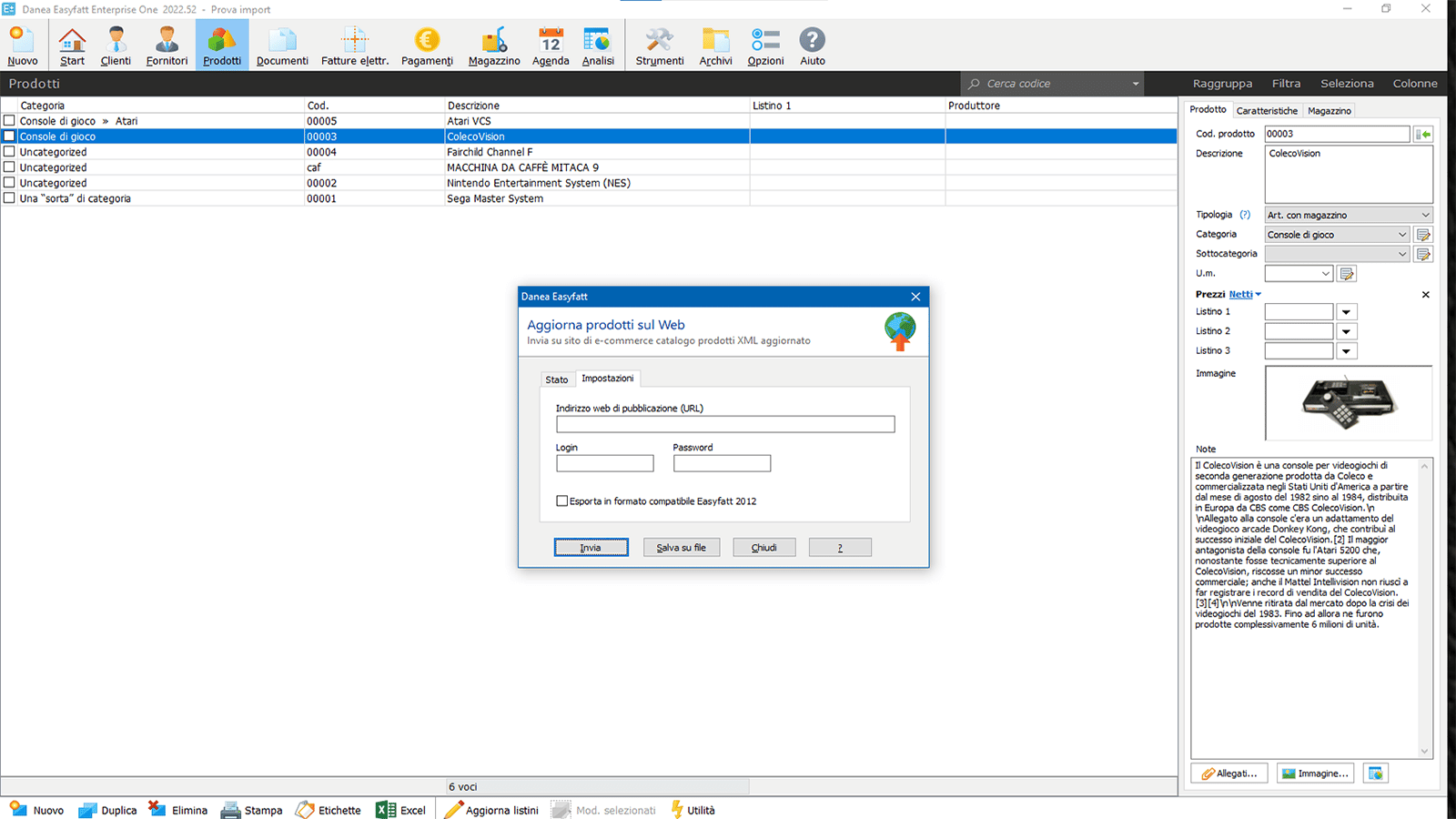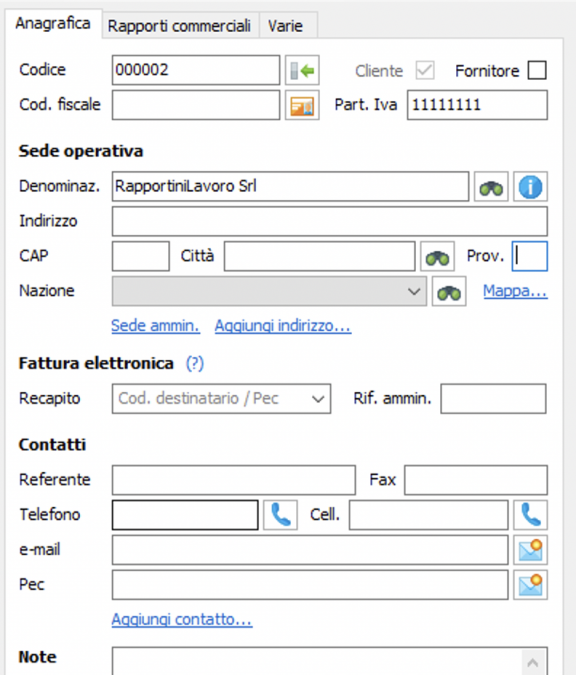[Danea Easyfatt Import/export: Guía Completa]

Executive Summary

This comprehensive guide delves into the intricate world of Danea Easyfatt import/export operations, offering a clear roadmap for navigating this essential aspect of the software. From understanding the basic principles to exploring advanced functionalities, we aim to empower you with the knowledge and skills to confidently manage your data transfers within Danea Easyfatt.

Introduction
Danea Easyfatt is a powerful accounting software that simplifies business management. One of its key features is the ability to seamlessly import and export data, streamlining workflows and enhancing efficiency. Whether you need to import customer data from a spreadsheet, export invoices for a specific period, or integrate with other software, Danea Easyfatt provides the tools and flexibility to accomplish these tasks effectively. This guide will guide you through the entire process, from setting up the initial configuration to troubleshooting common issues.
FAQs
1. What data can I import/export in Danea Easyfatt?
You can import and export various types of data, including:
- Customer data: Import customer details like names, addresses, and contact information from a spreadsheet or other external sources.
- Supplier data: Import supplier details like names, addresses, and contact information.
- Products and services: Import product and service information, including descriptions, prices, and tax rates.
- Invoices: Import or export invoices for easier tracking and management.
- Payments: Import or export payment records for comprehensive financial analysis.
2. What file formats does Danea Easyfatt support?
Danea Easyfatt supports various common file formats, including:
- CSV (Comma Separated Values): A simple and widely used format for importing and exporting tabular data.
- TXT (Text File): A basic plain text format suitable for simple data transfers.
- Excel (XLS, XLSX): Supports importing and exporting data from Microsoft Excel spreadsheets.
- XML (Extensible Markup Language): A structured data format that allows for complex data representation.
3. How do I ensure data integrity during import/export operations?
To maintain data integrity, follow these best practices:
- Validate the data: Verify the accuracy and consistency of the data before importing or exporting it.
- Use appropriate delimiters: Ensure that the correct delimiters are used when working with CSV files, as incorrect delimiters can lead to data corruption.
- Backup your data: Always create backups of your data before performing any import or export operations.
- Test the import/export process: Perform test imports and exports on a small sample of data before processing large volumes.
Importing Data into Danea Easyfatt
Danea Easyfatt offers a user-friendly interface for importing data from external sources. Here’s a breakdown of the process:
- Choose the import function: Navigate to the relevant menu option to initiate the import process. This typically involves selecting the “Import” or “Data Import” function.
- Select the data source: Choose the source from which you want to import the data, such as a CSV file, Excel spreadsheet, or a database.
- Select the file format: Specify the file format of the data you want to import.
- Map the data fields: Match the data fields in your external file with the corresponding fields in Danea Easyfatt.
- Preview the data: Review the data preview to ensure that it aligns with your expectations.
- Import the data: Initiate the import process and monitor the progress.
Important considerations for importing data:
- Data format: Ensure that the imported data conforms to the expected format in Danea Easyfatt. For instance, date formats and currency symbols should be consistent.
- Field mapping: Carefully map the fields in your external file to the corresponding fields in Danea Easyfatt. Incorrect mappings can lead to errors.
- Data cleansing: Cleanse the data in your external file before importing it to Danea Easyfatt. Remove any extraneous characters or invalid data points.
Exporting Data from Danea Easyfatt
Exporting data from Danea Easyfatt allows you to share or analyze your data in external applications or systems. Here’s a step-by-step guide:
- Choose the export function: Select the relevant menu option to initiate the export process. Look for “Export” or “Data Export” options.
- Select the data to export: Specify the data you want to export. This could be specific customer records, invoices, payments, or other data sets.
- Select the file format: Choose the desired file format for exporting the data. Options might include CSV, Excel, TXT, or XML.
- Configure export settings: Depending on the file format, you might need to configure specific settings, such as delimiters, data encoding, or formatting options.
- Export the data: Initiate the export process and wait for it to complete.
Tips for exporting data:
- Data filtering: Use filtering options to export only the data you need, instead of exporting entire datasets.
- Data aggregation: Consider aggregating data before exporting, if needed. For instance, you might want to export a summary of invoice data instead of individual invoices.
- Data protection: Ensure that sensitive data is adequately protected when exporting, particularly when sharing data with external parties.
Managing Import/export Settings
Danea Easyfatt provides options for customizing import/export settings to suit your specific requirements. These settings can include:
- File formats: Define the default file formats for importing and exporting data.
- Delimiters: Specify the character used to separate data fields in CSV files.
- Encoding: Choose the character encoding for imported and exported data.
- Field mapping templates: Create templates to streamline the mapping of fields between external files and Danea Easyfatt.
Optimizing import/export operations:
- Utilize templates: Use pre-defined import/export templates to automate the process and minimize errors.
- Configure data validation rules: Implement validation rules to ensure that imported data meets specific criteria.
- Automate tasks: Use scripting or automation tools to streamline repetitive import/export tasks.
Troubleshooting Common Issues
While Danea Easyfatt offers robust import/export capabilities, you might encounter occasional issues. Here are some common troubleshooting steps:
- Verify data format: Ensure that the imported data is in the correct format and that the file is not corrupted.
- Check field mappings: Review field mappings to ensure that data is being mapped correctly.
- Inspect data errors: Identify and correct any errors in the imported data.
- Seek support: Contact Danea Easyfatt support for assistance with complex issues or if you need help with advanced functionalities.
Conclusion
This comprehensive guide provides a solid foundation for understanding and effectively managing Danea Easyfatt import/export operations. By leveraging the techniques and best practices outlined in this guide, you can streamline your data transfers, enhance your business workflows, and maximize the potential of Danea Easyfatt. Remember to adapt these principles to your specific needs, leverage available resources, and seek support when needed.
Keywords
- Danea Easyfatt
- Import/Export
- Data Transfer
- Accounting Software
- Business Management
Esta guía es un poco confusa, me parece que falta información. No encontré la explicación que buscaba sobre las regulaciones de importación para productos específicos.
La guía es bastante útil, pero sería genial si se incluyera información sobre los costos de transporte y los impuestos.
Me encanta cómo esta guía nos explica todo con tanta facilidad. ¡Ahora hasta yo puedo importar y exportar! 😂
¡Guau! Esta guía es tan completa que me imagino que se puede usar para importar y exportar unicornios. 🦄🌈
No estoy de acuerdo con la afirmación de que la importación es siempre más compleja que la exportación. Depende de la situación y del tipo de producto.
Me encanta esta guía! Muy completa y fácil de entender. Definitivamente me ayudó a comprender el proceso de importación y exportación. La información es clara y concisa, y los ejemplos son muy útiles.
Es importante mencionar que las leyes de importación y exportación pueden variar según el país. La guía debería incluir un apartado sobre las diferencias entre países.
Ahah! Así que ahora todos podemos ser expertos en importación y exportación, ¿verdad? Solo necesitamos leer esta guía mágica. 🤪